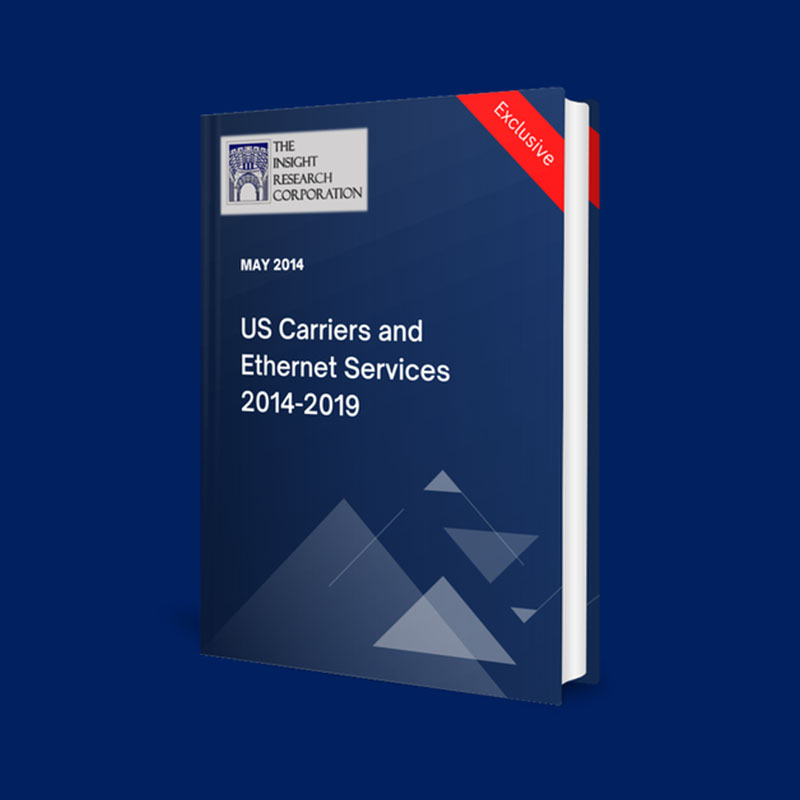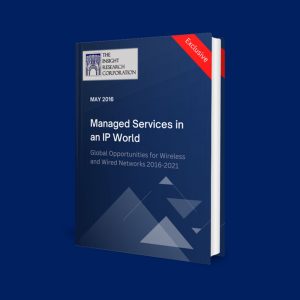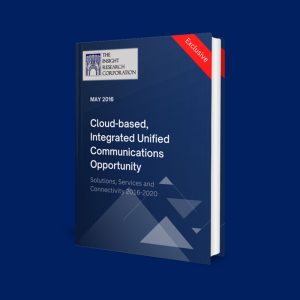Description
Insight’s use of the term “public Ethernet” refers to any Layer 2 public network carrier service that extends Ethernet beyond the LAN (local area network) and connects to customers across Ethernet interfaces. Public Ethernet may be marketed as transparent or native LAN, Ethernet, gigabit Ethernet, GigE (gigabit Ethernet), metro Ethernet, Ethernet private line (EPL), Ethernet virtual private line (EVPL), Layer 2 virtual private network (VPN), Ethernet access, VPLS (virtual private LAN service), or a variety of other names. Insight’s definition does not, however, include routed Layer 3 IP-VPN services, which also can be described as carrying IP (Internet protocol) over Ethernet. Our use of the phrase “public Ethernet services” includes relatively longstanding, upgraded, legacy transparent or native LAN services, whether asynchronous transfer mode (ATM)-based within the network core or using an Ethernet over fiber or a synchronous optical network (SONET) architecture. Our definition also includes newer services from small and large carriers that variously deliver end-to-end Ethernet directly over optical fiber.
Highlights
US public Ethernet revenues grew from $6.0 billion in 2014 to a projected $9.8 billion in 2019 at a CAGR of 10 percent. This grand total, however, incorporates a double-count in that “sell-through” wholesale Ethernet service is counted at two points, both paid by end-users to carriers for a service and the amount carriers pay other carriers to provide that same service.
Scope
Market Segmentation
Total US Carrier Ethernet Revenues:
By Topology:
- E-Private Line
- E-Virtual Private Line
- E-LAN
By Regional Domain:
By Type of Sale:
By Bandwidth Level:
- greater than 40 Gbit/s up to an including 100 Gbit/s
- greater than 10 Gbit/s up to an including 40 Gbit/s
- greater than 1 Gbit/s up to and including 10 Gbit/s
- greater than 100Mbit/s up to and including 1Gbit/s
- greater than 10Mbit/s up to and including 100Mbit/s
- up to 10Mbit/s
US Carrier Ethernet Total Port Estimates by Throughput:
- greater than 40 Gbit/s up to an including 100 Gbit/s
- greater than 10 Gbit/s up to an including 40 Gbit/s
- greater than 1 Gbit/s up to and including 10 Gbit/s
- greater than 100Mbit/s up to and including 1Gbit/s
- greater than 10Mbit/s up to and including 100Mbit/s
Table of Contents
Chapter I
EXECUTIVE SUMMARY
1.1 Public Ethernet
1.1.1 Definitions: Public vs. Carrier Ethernet
1.2 Market Segmentation
1.3 Market Trends
1.3.1 Enterprise Data Migration from IT to User
1.3.2 Increasing Traffic on ISP Distribution Networks
1.3.3 Mobility
1.3.4 Video on Demand
1.4 Ethernet Market Forecast
Chapter II
BACKGROUND & INTRODUCTION
2.1 The Emergence of Public Ethernet
2.1.1 The Ubiquity of Ethernet
2.2 Ethernet Services: Building Blocks
2.2.1 User Network Interface
2.2.2 Ethernet Virtual Connection
2.2.3 Service Throughput Parameters
2.2.4 Performance Quality Parameters
2.2.5 Bandwidth Profile
2.3 Ethernet Topologies: E-line vs. E-LAN vs. E-Tree
2.3.1 E-Line
2.3.2 E-LAN
2.3.4 E-Tree
2.3.5 Other Typologies: Dedicated vs. Switched
2.4 The Broader Data Networking Context
2.4.1 Packet Data Networking
2.4.2 Ethernet and SONET
2.4.3 Resilient Packet Ring
2.5 The Public Ethernet Concept
2.5.1 “Carrier Ethernet” vs. “Public Ethernet”
2.5.2 Ethernet Segments Defined
2.6 The MEF and Carrier Ethernet’s Five Attributes
2.6.1 Service Standardization
2.6.2 Scalability
2.6.3 Service Management
2.6.4 Reliability
2.6.5 Quality of Service
2.7 Public Ethernet Pricing Fundamentals
2.7.1 Costs Beyond Service Pricing: The Real Deal
2.8 Examples of Basic Public Ethernet Applications
2.8.1 LAN Extension
2.8.2 Layer 2 Virtual Private Network
2.8.3 Dedicated Internet Access (DIA)
2.9 The Case For and Against Public Ethernet
2.9.1 Ethernet’s Drivers
2.9.2 Advantages of Public Ethernet
2.9.3 Service Adoption Inhibitors
2.10 Evolving Industry Structure/Market Players
2.10.1 Industry Consolidation: The Market Context
2.10.2 MSOs Emergent
Chapter III
Trends & Markets
3.1 Ethernet Trends Old and New
3.2 Forces Driving Traffic Demand
3.2.1 Enterprise Data Migration from IT to User
3.2.2 Increasing Traffic on ISP Distribution Networks
3.2.3 Mobility
3.2.4 Video on Demand
3.3 IP Traffic Growth Continues
3.3.1 Ethernet Prices Decline
3.3.2 Ethernet Adoption Continues
3.4 Applications
3.4.1 Bring Your Own Device
3.4.2 History of Enterprise Data
3.4.3 Wireless
3.4.4 VoIP
3.5 Customer Segments
3.5.1 Verticals
3.5.2 SMB versus Enterprise
3.5.3 Wholesale
3.6 MEF’s CE 2.0
3.6.1 Recent Updates
3.6.2 Interoperability
3.6.3 Multiple-CoS Capability
3.6.4 Ethernet OAM Enhancing Reliability, Transparency
3.6.5 Ubiquitous Ethernet Interconnection
3.7 Outlook on 40G, 100G and 400G
3.7.1 Carriers Offer 100G Service
3.7.2 100G Inhibitors
3.8 Expanding Availability
3.8.1 Incumbents Expand Fiber Footprint
3.8.2 Ethernet Over Copper
3.9 Long Haul versus Metro Growth
3.10 Evolving Industry Structure/Market Players
3.10.1 Industry Consolidation: The Market Context
3.10.2 MSOs Big Players
3.10.3 Provider Strategies: Incumbent vs. Challenger
3.10.4 Issues in Partnership and Collaboration
3.11 The Retail Customer Perspective
3.12 The Current Market Context
3.12.1 Public Ethernet Grows While General Market Declines
3.12.2 International Trends
Chapter IV
MARKET FORECASTS
4.1 Methodology
4.2 Definitions and Forecast Segmentation
4.2.1 Definitions
4.2.2 Segmentation
4.3 Market Forecasts
4.3.1 Total Market
4.3.2 Market by Topology
4.3.3 Market by Regional Domain
4.3.4 Retail vs. Wholesale
4.3.5 Market Forecasts by Bandwidth Level
List for Tables:
Chapter I
I-1 Characteristics of Ethernet Service Varieties
Chapter II
II-1 SONET and Ethernet Defined Transmission Rates
II-2 Characteristics of Ethernet Service Varieties
II-3 Comparative Strengths of Layer 2 and Layer 3 VPNs
Chapter III
III-1 Average Relative Monthly Ethernet Port Costs – Europe, 2005 and 2010
III-2 Comparison of Link Speeds and Ports
Chapter IV
IV-1 Total US Public Ethernet Revenues, 2014-2019 ($Millions)
IV-2 US Public Ethernet Private Line Service Revenues, 2014-2019 ($Millions)
IV-3 US Public Ethernet Virtual Private Line Service Revenues 2014-2019 ($Millions)
IV-4 US Public Ethernet E-LAN Service Revenues, 2014-2019 ($Millions)
IV-5 US Public Ethernet Revenues by Topology, 2014-2019 ($Millions)
IV-6 Percentage US Public Ethernet Revenues by Topology, 2014-2019
IV-7 Metro Ethernet Revenues, 2014-2019 ($Millions)
IV-8 Long-Haul Ethernet Revenues, 2014-2019 ($Millions)
IV-9 US Public Ethernet Access Revenues, 2014-2019 ($Millions)
IV-10 US Public Ethernet Revenues by Regional Domain, 2014-2019 ($Millions) IV-11 US Public Ethernet Revenues, Percentages by Regional Domain, 2011-2019 IV-12 US Retail Public Ethernet Revenues, 2011-2019 ($Millions) IV-13 US Wholesale Public Ethernet Revenues 2011-2019 ($Millions) IV-14 US Public Ethernet Revenues by Retail/Wholesale 2011-2019 ($Millions)
IV-15 US Public Ethernet Revenues, Percentages by Retail/Wholesale, 2011-2019
IV-16 US Public Ethernet Revenues > 1 Gbit/s, 2011-2019 ($Millions)
IV-17 US Public Ethernet Revenues >100Mbit/s – 1Gbit/s, 2011-2019 ($Millions)
IV-18 US Public Ethernet Revenues >10Mbit/s – 100Mbit/s, 2011-2019 ($Millions)
IV-19 US Public Ethernet Revenues <=10Mbit/s, 2011-2019 ($Millions)
IV-20 US Public Ethernet Revenues by Bandwidth Level, 2011-2019 ($Millions)
IV-21 Percentage Revenues by Throughput Level, 2014-2019
IV-22 US Public Ethernet Total Port Estimates by Throughput, 2014-2019
List for Figures:
Chapter I
I-1 Total US Public Ethernet Revenues, 2013-2019 ($Millions)
Chapter II
II-1 User Network Interface
II-2 Frame Loss
II-3 E-Line Point-to-Point Service Type
II-4 E-LAN Multipoint-to-Multipoint Service Type
II-5 Typical IP Network
II-6 Managed Packet Network, Virtual Private Line
II-7 Resilient Packet Ring Technology
II-8 LAN Extension Using E-LAN Services
II-9 Illustration of VLAN Tag Support
II-10 Dedicated Internet Access
Chapter III
III-1 Typical ISP Distribution Network
III-2 Migration to Higher Speed Internet Service, 2012-2013
III-3 Typical Pre LTE Wireless Backhaul Configuration
III-4 United States IP Traffic by Segment, 2013-2018
III-5 Zayo Change in Price for Ethernet Services
III-6 Ethernet Service Revenue Index, 2012-2014
III-7 AT&T Packet Revenue
III-8 Cell Site Backhaul Speeds by Technology
III-9 Revenue Increases (CAGR) AT&T vs Others, 2012-2014
Chapter IV
IV-1 Total US Public Ethernet Revenues, 2014-2019 ($Millions)
IV-2 US Public Ethernet Private Line Service Revenues, 2014-2019 ($Millions)
IV-3 US Public Ethernet Virtual Private Line Service Revenues, 2014-2019 ($Millions)
IV-4 US Public Ethernet E-LAN Service Revenues, 2014-2019 ($Millions)
IV-5 Metro Ethernet Revenues, 2014-2019 ($Millions)
IV-6 Long-Haul Ethernet Revenues, 2014-2019 ($Millions)
IV-7 US Public Ethernet Access Revenues, 2014-2019 ($Millions)
IV-8 US Retail Public Ethernet Revenues, 2011-2019 ($Millions)
IV-9 US Wholesale Public Ethernet Revenues 2011-2019 ($Millions)
IV-10 US Public Ethernet Revenues > 1 Gbit/s, 2011-2019 ($Millions)
IV-11 US Public Ethernet Revenues >100Mbit/s – 1Gbit/s, 2011-2019 ($Millions)
IV-12 US Public Ethernet Revenues >10Mbit/s – 100Mbit/s, 2011-2019 ($Millions)
IV-13 US Public Ethernet Revenues <=10Mbit/s, 2011-2019 ($Millions)




